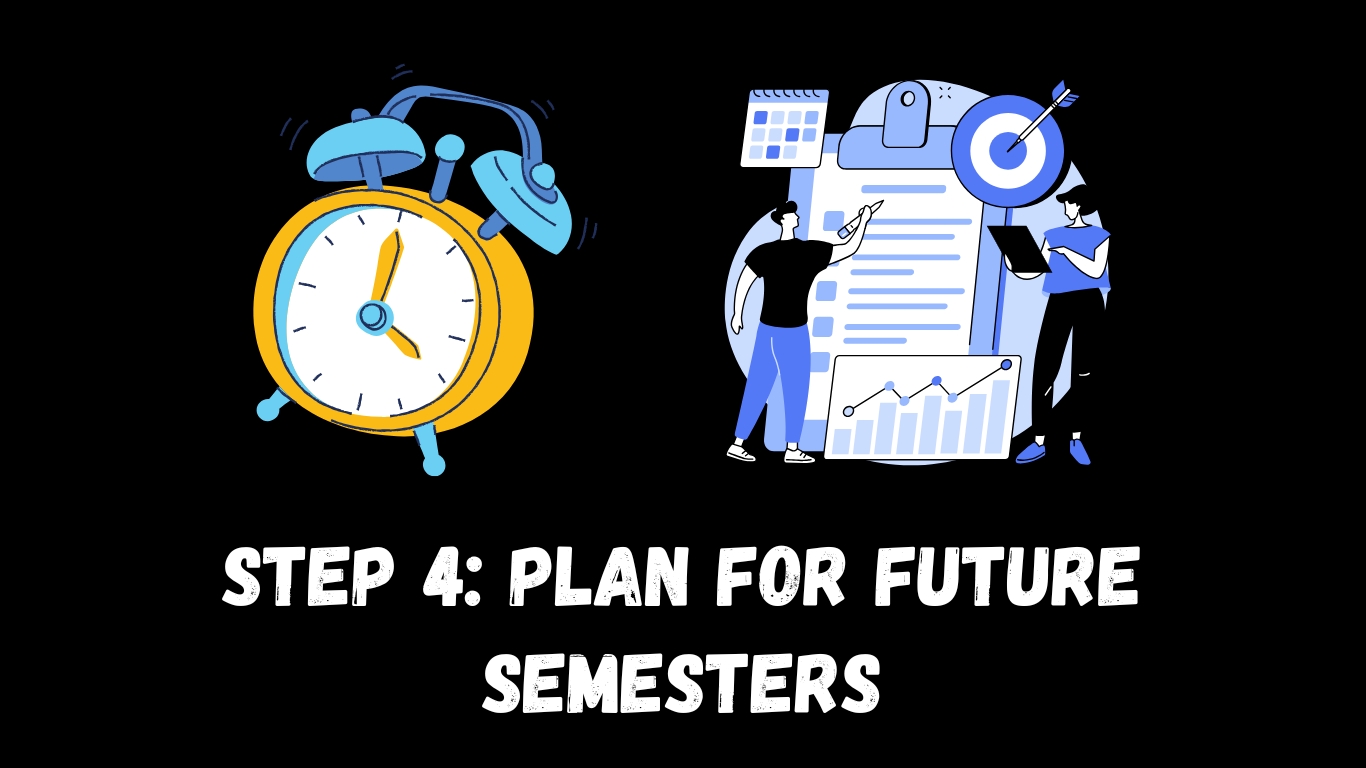Introductions
Dreaming of studying in the USA but feeling overwhelmed by the staggering costs of tuition and living expenses? You’re not alone. The United States hosts over 1 million international students each year, but with tuition fees ranging from $20,000 to $60,000 annually and average living expenses of $10,000 to $15,000 per year, affording an education in the U.S. can seem like an impossible dream.
What if I told you that you could kick-start and even complete your entire degree with just enough funds to cover your first semester? Sounds ambitious, right? But thousands of students have achieved this by combining strategic planning, resourcefulness, and determination.
This guide will show you how to navigate your study abroad journey step-by-step—from securing scholarships and landing on-campus jobs to mastering budgeting hacks and finding financial aid opportunities. With the right approach, your American dream isn’t just a possibility; it’s within reach.
Ready to turn limited funds into a full-fledged degree? Let’s dive in and unlock the tools you need to thrive in the U.S. education system!

Why Start with Only the First Semester’s Funds?
The cost of studying in the USA can be daunting—tuition fees alone range from $10,000 to $30,000 per semester, and visa requirements often demand proof that you can fund your entire year (EducationData.org, 2023). But here’s the good news: if you can secure just enough to cover your first semester, you can set yourself up for success and figure out the rest step by step.
Here’s how it works:
- You Can Establish Yourself Financially:
Did you know that nearly 75% of international students work part-time during their studies? Many start with on-campus jobs to cover living expenses and chip away at tuition (NAFSA, 2023). Once you’re in the U.S., you’ll find opportunities to earn, save, and budget better as you settle into your new life. - Scholarships and Grants Are Within Reach:
Thousands of scholarships open up for international students after their first semester, often based on your academic performance or financial need. Plus, U.S. universities collectively award over $8 billion in financial aid to international students each year (Institute of International Education, 2023). - You’ll Learn Cost-Saving Hacks:
From finding shared housing and using student discounts to cutting unnecessary expenses, international students can reduce their living costs by up to 40% with smart budgeting (College Board, 2023). You’ll quickly discover how to stretch your funds without sacrificing quality of life.
Starting with just your first semester’s funds gives you the time, flexibility, and opportunity to access resources you may not have known existed. It’s not about having it all figured out on day one—it’s about taking that first step. With a little determination, your first-semester investment can become the foundation for your entire academic journey.

Step 1: Plan Your Finances Before You Arrive
1. Secure Enough for Your First Semester
When applying for an F-1 visa to study in the United States, most universities and consular offices require you to show proof of funds for at least one academic year. While this can seem overwhelming, many students manage to gather just enough to cover their first semester and build a financial plan from there.
Your first-semester funds typically include:
- Tuition Fees:
Depending on the university and program, tuition costs can range anywhere from $5,000 to $15,000 for the first semester. Public universities are often more affordable than private ones, so do your research to find a program that fits your budget. - Basic Living Expenses:
You’ll need funds to cover necessities such as rent, groceries, transportation, utilities, and health insurance. On average, international students spend about $1,000 to $1,500 per month on living costs, though this can vary based on your location (urban areas tend to be more expensive). - Initial Setup Costs:
Moving to a new country comes with upfront expenses. Be prepared for costs like rent deposits, furniture, kitchen essentials, SIM cards, and textbooks, which can add up to $1,000 to $2,000 in the first few weeks.
Tips for Saving Before You Leave
- Freelance or Work Part-Time in Your Home Country:
Start building your savings early by offering freelance services like tutoring, graphic design, content writing, or tech support. Websites like Upwork or Fiverr make it easier to earn remotely while gaining valuable skills. Alternatively, look for part-time work locally to boost your savings. - Ask for Financial Support:
Don’t be afraid to reach out to close friends and family members. Whether it’s through personal loans, financial gifts, or small contributions, their support can make a huge difference. You can also turn to crowdfunding platforms like GoFundMe or Ketto to raise funds. Highlight your educational goals and explain how their help will impact your future. - Apply for Education Loans with Favorable Terms:
Many banks in your home country offer student loans specifically for studying abroad. Look for options with low interest rates, flexible repayment terms, and deferred payments until after graduation. Some government-backed schemes may even offer subsidized loans for aspiring students.
By securing enough money for your first semester, you give yourself a head start while buying time to explore scholarships, part-time work, and financial opportunities once you’re in the U.S. Remember, the key is to plan early, save strategically, and take one step at a time toward achieving your dream.
2. Apply for Scholarships
Scholarships are one of the most effective ways to reduce your financial burden, and the good news is that thousands of scholarships are available for international students in the USA. Start by researching opportunities offered by universities, as many provide merit-based scholarships for high-performing students and need-based grants for those with financial constraints. Explore external organizations like Fulbright, Rotary International, and EducationUSA, which offer funding specifically for international students. Don’t overlook smaller scholarships based on unique criteria, such as community involvement, leadership roles, or specific talents. Remember to prepare strong applications, including compelling essays, recommendation letters, and academic transcripts. Applying early and targeting multiple opportunities can significantly increase your chances of securing funding for future semesters.

Where to Find Scholarships:
- University Websites: Most U.S. universities offer scholarships specifically for international students. Check the financial aid or scholarships section of their websites for merit-based, need-based, or program-specific awards.
- Online Platforms: Use dedicated platforms like Scholarship Positions, EducationUSA, FastWeb, and InternationalScholarships.com to search for opportunities tailored to international students.
- Government and Nonprofit Organizations: Programs funded by governments or nonprofits often provide generous financial aid for international students studying in the U.S.
Popular U.S. Scholarships for International Students:
- Fulbright Foreign Student Program: A prestigious scholarship funded by the U.S. government that covers tuition, living expenses, and travel for graduate students and researchers.
- Hubert H. Humphrey Fellowship Program: A fully-funded fellowship for mid-career professionals to enhance leadership skills through academic courses and professional experiences.
- Knight-Hennessy Scholars Program (Stanford University): One of the most competitive programs, offering full funding for graduate students across disciplines at Stanford, including tuition, stipends, and additional support.
Our another Blog: Fully Funded Undergraduate Scholarships in the USA 2025
Key Tips for Success:
- Start Early: Many scholarship deadlines fall months before the academic year begins, so plan ahead.
- Prepare a Strong Application: Tailor each application with compelling essays, glowing recommendation letters, and a polished academic transcript.
- Apply to Multiple Opportunities: Don’t put all your eggs in one basket; applying to several scholarships increases your chances of securing funding.
By strategically researching and applying for scholarships, you can significantly reduce tuition and living expenses, making it easier to manage your finances throughout your study abroad journey.
3. Choose an Affordable University or Program
Not every U.S. university comes with a sky-high price tag. With a bit of research and smart choices, you can find quality education options that won’t drain your wallet. By starting with cost-effective institutions and programs, you can take a big step toward earning your degree without financial stress.
Public Universities:
Public universities, funded by state governments, often have lower tuition fees than private institutions. While international student rates are higher than for residents, they are still more affordable than many alternatives.
- University of Texas System: Known for strong academics and reasonable tuition.
- University of Wyoming: Offers one of the most affordable tuition rates for international students in the U.S.
Community Colleges:
Starting your education at a community college is one of the most budget-friendly routes. You can complete your first two years here for a fraction of the cost and then transfer to a four-year university to earn your bachelor’s degree.
- Average tuition cost: $3,500 to $8,000 per year.
- Examples:
- Santa Monica College (California): A popular option for students who later transfer to schools like UCLA.
- Seattle Colleges (Washington): Offers affordable tuition and strong international student support.
Look for Cost-Friendly States:
Some states have both low tuition fees and a lower cost of living, making them ideal for budget-conscious students. States like Wyoming, Texas, North Dakota, and Arkansas are great options to explore.
Tuition Waivers and Discounts:
Many universities offer tuition waivers or discounts for international students. These can be merit-based or tied to special university programs or partnerships. Don’t hesitate to ask about these options when applying.
Affordable Education at a Glance
| Option | Details | Example Schools |
|---|---|---|
| Public Universities | Lower tuition fees compared to private schools. | University of Wyoming, University of Texas |
| Community Colleges | Start cheap, transfer later. Save thousands. | Santa Monica College, Seattle Colleges |
| Cost-Friendly States | States with affordable tuition and living costs. | Texas, Wyoming, North Dakota |
| Tuition Waivers/Discounts | Reductions based on merit or partnerships. | Check specific university programs |
By choosing affordable programs, starting at a community college, or targeting cost-friendly states, you can get a world-class education without overwhelming your finances. Combine this approach with scholarships, on-campus jobs, and careful planning, and you’ll be able to turn your dreams of studying in the U.S. into reality—without breaking the bank.
Our another Blog: Affordable Universities in the USA
4. Arrange Housing in Advance
One of the biggest expenses for international students is housing, but with some planning, you can find affordable options that fit your budget and make your transition to studying in the U.S. smoother. The key is to start looking for a place early and explore different types of accommodation that work for both your finances and lifestyle.
Affordable Housing Options to Consider:
- On-Campus Dormitories:
Many universities offer on-campus dormitories, which are often subsidized to make them more affordable for students. Dorms are convenient because they’re close to classes, libraries, and dining halls, which makes campus life easier and more connected. Plus, you won’t have to worry about utility bills or furniture—everything is included! - Shared Apartments with Fellow Students:
If you prefer more independence, consider shared apartments with other students. Sharing a place can cut your rent costs significantly. In major cities, shared apartments can cost anywhere from $500 to $1,500 per month, depending on the location. Platforms like Roomster or Craigslist can help you connect with potential roommates and find affordable listings. It’s a great way to meet new people and split living expenses. - Homestay Programs:
For a more immersive experience, consider a homestay program, where you live with an American family. Not only is this often more affordable than renting a private apartment, but many homestays include meals, which can help you save on food costs. Plus, it’s a fantastic opportunity to get to know the local culture firsthand.
Useful Resource: Roomster
To make finding a roommate or shared accommodation easier, check out Roomster, an online platform that connects students with others seeking shared housing. You can browse listings, view photos, and connect with potential roommates before even arriving in the U.S.
Arranging housing in advance means less stress and more time to focus on your studies once you’re in the U.S. Whether you decide on campus housing, a shared apartment, or a homestay, taking the time to plan ahead can save you money and make your living experience a lot more enjoyable.

Step 2: Budget Smartly During the First Semester
1. Track Your Expenses
One of the best ways to manage your finances as an international student is by keeping track of your spending. You might be surprised at how quickly small expenses add up, so using tools like Mint can help you get a clear picture of where your money is going. This way, you can see patterns in your spending habits and identify areas where you can cut back.
Pro Tip:
Start by prioritizing fixed costs—these are the non-negotiable expenses like rent, tuition, and utilities. Once you have your essential expenses covered, focus on controlling variable costs, such as dining out, entertainment, or shopping. Setting monthly limits for these discretionary expenses will help you stick to your budget and avoid overspending.
By regularly tracking your expenses, you can make smarter financial decisions, stay within your budget, and ensure that your money stretches further throughout the semester.
2. Save on Living Expenses
Living in the U.S. can add up quickly, but there are plenty of ways to keep your expenses in check. By making a few smart choices, you can save money on daily costs and keep your budget intact.
- Groceries: One of the easiest ways to save is by shopping at budget-friendly stores like Walmart or Aldi, which offer affordable options for fresh produce, snacks, and essentials. Planning your meals ahead of time and cooking at home rather than eating out is another simple way to cut costs. If you’re short on time, meal prepping on weekends can help you save even more and avoid the temptation of ordering takeout.
- Transportation: Owning a car can be expensive with all the costs of gas, parking, and insurance. Instead, opt for public transportation or bike whenever possible. Many cities in the U.S. have great public transit systems, and you might be eligible for student discounts. Plus, cycling not only saves you money but also gives you a chance to explore your new city! If you live in a walkable area, don’t underestimate how much money you can save just by walking around.
- Textbooks: Textbooks can be a huge financial burden, but you don’t have to pay full price. Amazon, eBay, and local bookstores often offer second-hand books at a fraction of the price. Alternatively, you can rent textbooks or use digital versions from your university library. Many libraries also provide free access to eBooks and other course materials, so always check there first to save a few extra bucks.
By being resourceful with groceries, transportation, and textbooks, you’ll find that living in the U.S. doesn’t have to be as expensive as it seems. With a little planning, you can stretch your budget and still enjoy your study experience without breaking the bank.
3. Take Advantage of Campus Resources
One of the best things about studying in the U.S. is the wealth of resources available to students—many of which are free or very affordable. By tapping into these services, you can not only enhance your academic experience but also save money while making the most of your time on campus.
1. Campus Facilities: Most universities offer free access to gyms, libraries, and even specialized study spaces. Many campuses have state-of-the-art fitness centers, which means you don’t have to pay for an expensive gym membership. The university library is another great resource, often providing free access to textbooks, research materials, and even computers.
2. Workshops, Seminars, and Networking Events: Stay on top of your personal and professional growth by attending free workshops, seminars, and networking events offered by your university. These events cover a range of topics, from career development to mental health, and are a great way to meet new people, learn new skills, and expand your knowledge without spending a dime.
3. Student Discounts: Take full advantage of student discounts on everything from software and books to public transportation and entertainment. Many companies, including Apple and Microsoft, offer special pricing for students on software and devices. Don’t forget to check for student discounts at local stores, movie theaters, and even online shopping sites like Amazon.
By using the resources available at your university, you can save money, stay healthy, and get ahead in your studies and career—all while having a more enjoyable and affordable experience in the U.S.

Step 3: Earn While You Learn
Balancing studies with earning money is a key part of the student experience in the U.S., and the good news is, there are multiple ways for international students to do just that! Whether you start with a campus job or explore opportunities after graduation, earning while you study can help ease financial stress and give you valuable work experience. Here’s how to make it happen:
1. Start with On-Campus Jobs
As an F-1 visa holder, you’re allowed to work up to 20 hours a week on campus during the academic year, which can be a great way to earn money without overwhelming your schedule. Many universities offer flexible part-time jobs that work around your classes. Some options include:
- Research or Teaching Assistant: These positions allow you to work closely with professors and gain research experience related to your field of study.
- Library Assistant or Tech Support: If you’re good with technology or enjoy helping others, these jobs often involve assisting students and staff in the library or computer labs.
- Cafeteria or Bookstore Staff: These are great customer service positions that help you meet other students and keep a flexible schedule.
Income Potential:
On-campus jobs typically pay between $10 and $15 per hour, which can cover your monthly expenses, from groceries to transportation. Plus, they’re a good way to meet new people and become more involved in your campus community.
2. Explore CPT and OPT Opportunities
If you want to expand your work experience beyond the campus, consider Curricular Practical Training (CPT) and Optional Practical Training (OPT). These programs are designed to help students gain real-world experience while studying and after graduation:
- Curricular Practical Training (CPT): This option allows you to work off-campus in a job that’s directly related to your major and academic program, but it must be part of your curriculum.
- Optional Practical Training (OPT): After graduation, you can work for up to 12 months in a role related to your degree, and if you’re in a STEM field, you can extend it to 36 months. This is a fantastic way to gain experience and even explore potential job opportunities for when your studies are complete.
3. Try Freelancing or Remote Work
If your visa allows it, freelancing or remote work can be a flexible and rewarding way to earn money. Whether you’re a skilled writer, designer, developer, or tutor, there are numerous platforms where you can find freelance gigs that fit your schedule:
Freelancing lets you build your portfolio, gain experience in your field, and work from anywhere—all while managing your academic responsibilities. Plus, it’s an excellent way to make extra money without being tied to a fixed location or schedule.
Earning while you study is not just about making money—it’s about gaining skills, building connections, and enhancing your experience in the U.S. Whether you start with an on-campus job, dive into freelance work, or explore opportunities through CPT and OPT, there are many ways to earn, grow, and thrive during your studies.
Our another Blog: Best ways to Find Jobs in the USA as an International Student

Step 4: Plan for Future Semesters
Looking ahead is just as important as managing your finances in the present. While the first semester can be a juggling act, it’s the planning for future semesters that will keep you on track and help ease financial pressures as you continue your studies. Here are some ways to make your future semesters more manageable:
1. Apply for Mid-Program Scholarships
Did you know that many universities offer performance-based scholarships to students who excel in their first year? If you stay focused and maintain a strong GPA, you could qualify for a scholarship that helps fund the next stage of your education. These opportunities can be competitive, so it’s important to check with your university’s financial aid office for any mid-program scholarships you can apply for. Keep up the good work during your first year, and you might find yourself rewarded financially!
2. Consider Payment Plans
Paying for tuition all at once can be overwhelming, but many universities offer payment plans that allow you to spread your tuition payments over the semester. This can make budgeting easier and reduce some of the financial pressure. These plans often don’t charge interest, so they’re a great way to ease your stress and give you more flexibility in how you manage your finances. Be sure to reach out to your university’s student accounts office to ask about options and deadlines.
3. Seek Assistantships
If you’re pursuing graduate studies, consider applying for a teaching or research assistantship. These positions often cover your tuition costs and provide a stipend to help with living expenses. Not only will you gain valuable experience in your field, but you’ll also have financial support that can make a big difference. Start by talking to your department’s faculty members or checking with your graduate school about available assistantship opportunities.
4. Build a Support Network
Sometimes the best opportunities come from the people around you. Join student organizations or cultural groups that align with your interests. These communities can often offer tips and job referrals, as well as help you build your network. Don’t forget about your university’s alumni network—connecting with alumni who have been in your shoes can give you career advice, as well as insight into finding internships or assistantships. Building relationships with those who have walked the same path can lead to new opportunities.
Looking ahead and planning for future semesters is a smart way to keep your finances in check and reduce stress. Whether it’s applying for scholarships, setting up payment plans, or seeking assistantships, taking these steps now can set you up for success in the future. By building a network and staying proactive, you’ll find that funding your studies doesn’t have to feel overwhelming.
FAQs
1. Can I study in the U.S. with only the first semester’s funds?
Yes, it’s possible! While it can be challenging, many international students manage to complete their studies with just enough funds for the first semester. According to the Institute of International Education, over 70% of international students in the U.S. receive some form of financial aid, which can help reduce costs. With proper planning, scholarships, and part-time work opportunities, it’s entirely achievable.
2. Can international students work in the U.S.?
Yes, F-1 visa holders are allowed to work on-campus for up to 20 hours per week during the academic year and 40 hours per week during breaks. Additionally, many students explore off-campus work options like Curricular Practical Training (CPT) and Optional Practical Training (OPT). According to the U.S. Department of Homeland Security, OPT allows international students to work for up to 12 months (or 36 months for STEM graduates) after completing their degree.
3. What are the most affordable U.S. universities?
Several public universities offer competitive tuition rates, making them more affordable for international students. For example, University of Wyoming has an average annual tuition of approximately $15,000 for international students, while SUNY (State University of New York) schools offer average tuition rates around $18,000 per year. Additionally, community colleges are a great cost-effective option, with tuition rates averaging around $8,000–$10,000 per year.
4. How much can I expect to pay for living expenses in the U.S.?
Living expenses can vary greatly depending on location. On average, students in the U.S. spend between $10,000 and $18,000 per year on living expenses, including rent, food, and transportation. U.S. News & World Report suggests that students in major cities like New York or Los Angeles may face higher living costs, while smaller cities or rural areas may offer more affordable options.
5. Are there scholarships available for international students in the U.S.?
Yes! Thousands of scholarships are available to international students. EducationUSA reports that approximately 60% of international students receive financial aid, ranging from partial to fully funded scholarships. Some of the most popular scholarships include the Fulbright Program, Hubert H. Humphrey Fellowship, and International Student Scholarships offered by individual universities.
6. How can I find part-time jobs as an international student in the U.S.?
You can find part-time jobs on-campus by checking with your university’s student employment office or looking for positions such as library assistant, research assistant, or tech support. Additionally, websites like Indeed or Handshake (a platform often used by universities) can be valuable resources for finding on- and off-campus job opportunities.
7. What are the typical costs of textbooks and study materials?
Textbooks can be a significant part of your academic expenses, often costing $500–$1,000 per year depending on your program. However, many students save by buying used textbooks, opting for digital versions, or renting books through platforms like Chegg or Amazon. Many universities also offer free online resources and digital libraries that can help reduce costs.
